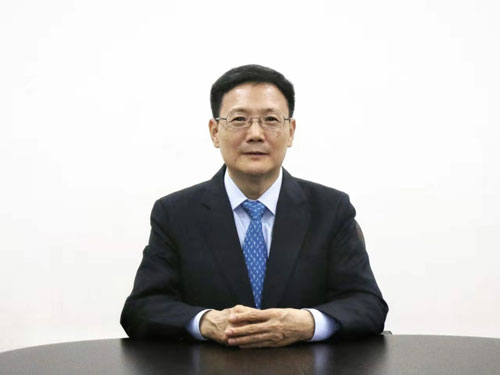Li Bijian Consul General of China in Karachi
Through unremitting efforts, Xinjiang has made unprecedented achievements in economic and social development and improvement of people’s livelihood, and the sense of access, happiness and security of people of all ethnic groups has been continuously enhanced.
Xinjiang is in the best period of prosperous development in its history. Continuous Population Growth.
The people of all ethnic groups in Xinjiang are living and working in peace and tranquillity, and the population has continued to grow. From 2010 to 2018, the resident population in Xinjiang rose from 21,185,800 to 24,867,600, an increase of 3,051,800 and 13.99%.
Among them, the Uyghur population rose from 10,171,500 to 12,718,400, an increase of 2,546,900 and 25.04%, accounting for 88.59% of the minority growth population. The Han population rose from 8,829,900 to 9,068,000, an increase of 176,900 and 2.0%.
The growth of the Uyghur population was not only higher than that of the whole territory but also significantly higher than that of the Han population. Rapid Economic Development. From 2014 to 2019, Xinjiang’s gross regional product grew from 919.59 billion yuan to 1359.71 billion yuan, with an average annual growth rate of 7.2%.
General public budget revenue grew from 128.23 billion yuan to 157.76 billion yuan, with an average annual growth rate of 5.7%. Infrastructure has been continuously improved, and all prefectures and cities have stepped into the era of highways.
In recent years, the number of Chinese and foreign tourists to Xinjiang has broken records, with 150 million in 2018, up 40.09% year-on-year, and 213 million in 2019, up 41.96% year-on-year.
Cultural intermingling and coexistence. Since ancient times, Xinjiang has been home to various ethnic groups, where different ethnic cultures coexist.
The unique natural environment and geographical conditions in Xinjiang resulted in the development of refined oasis farming and grassland nomadism, and migrating ethnic groups with different lifestyles and working practices communicated with, complemented and integrated with each other, creating a dynamic coexistence of different cultures.
During Xinjiang’s long historical evolution, it has always been a place where many religions have coexisted. The ethnic groups of Xinjiang live together, study together, work together, and share happiness.
They influence, assimilate and integrate with each other in language, diet, costume, music, dance, painting, architecture and other aspects of social life, culture and art. A common feature of these ethnic cultures is that they all are interrelated.
Freedom of religious belief is fully protected. First, the normal religious activities of Muslims of all ethnic groups are fully guaranteed.
In accordance with the teachings, rules and traditional customs, they perform normal religious activities such as chanting, worship and prayer in mosques and in their own homes, all in full accordance with their personal wishes.
Second, the publication and distribution of Islamic classics are fully guaranteed. In Xinjiang, the Islamic Steering Committee was established to translate and publish the Koran and Sahih al-Bukhari, and other Islamic classics in Chinese, Uyghur, Kazakh, and Kirghiz, all of which are distributed free of charge to religious clergy and mosques.
Third, the construction of the Islamic talent pool is fully guaranteed. There are 10 Islamic institutions in Xinjiang, and the government has helped religious institutions improve their operating conditions and train a new generation of the clergy of nearly 1,000 people each year.
Fourth, the right of religious communities to participate in politics is fully guaranteed. More than 1,000 religious people of all ethnic groups in Xinjiang serve as representatives and members of people’s congresses and political consultative conferences at all levels, fulfilling their rights to participate in political affairs and democratic supervision.
Significant improvement in people’s lives. Under the current standards, all 3,064,900 poor people in Xinjiang have been lifted out of poverty, all 3,666 poor villages have been withdrawn, and all 32 poor counties have been removed from the list of poverty, so the problem of absolute poverty in Xinjiang has been historically solved. From 2014 to 2019, the per capita disposable income of Xinjiang residents has increased by 9.1% annually on average.
More than 1.69 million rural housing projects and 1.56 million urban housing projects have been completed, and more than 10 million people have moved to new homes.
The level of basic public services in urban and rural areas has been continuously improved, the social security system is becoming more and more perfect, the implementation of free health check-ups for all, the conditions of medical facilities in rural and pastoral areas have been significantly improved, the standardization rate of township health centres and village health offices have reached 100%, and the participation rate of residents in basic medical insurance has reached 99.7%.
http://twitter.com/pakobserver










